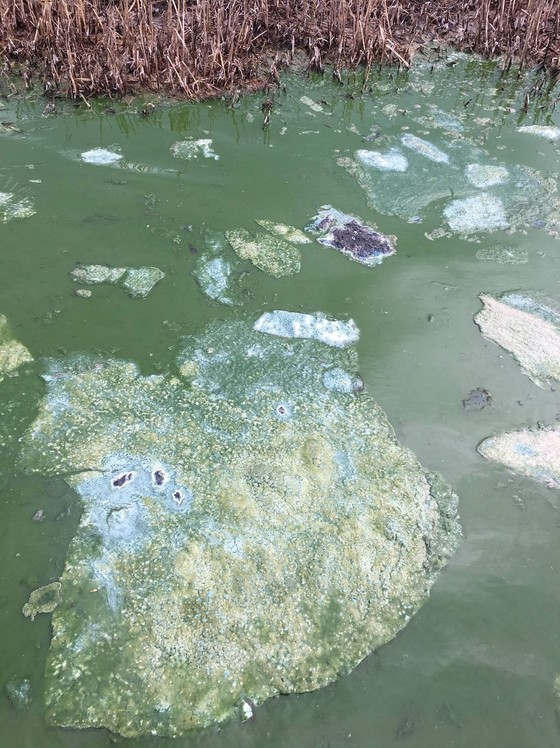
May 17, 2021
Media Contact
Vivienne Jannatpour, (303) 678-6277
Be cautious of algal blooms in lakes and ponds this summer
Keep people and pets out of slow-moving waterbodies where algae may be present
Boulder County, Colo. - With summer approaching and temperatures rising, Boulder County and the City of Boulder remind community members to exercise caution around lakes and ponds where algae blooms may be present. If community members see algae in lakes and ponds, they should take extra precautions to avoid contact with the water because some algal blooms can be harmful to people and pets.
Some algal blooms can contain cyanobacteria, often referred to as blue-green algae. While the vast majority of algae often seen in ponds and lakes during summer months are not toxic, cyanobacteria can produce toxins, which can be harmful to dogs and humans at elevated levels. Warmer temperatures, stagnant water, and nitrogen and phosphorus (nutrient) loading from fertilized lawns and other sources can facilitate algae and cyanobacteria growth.
According to the Colorado Department of Public Health and Environment, cyanobacteria blooms may look like thick pea soup or spilled bluish-green paint on the water's surface and can also create a thick mat of foam along the shoreline. In general, the long, stringy, bright green strands that appear either slimy or cottony, or are mustard yellow in color are not the harmful type of algae.
At lakes and ponds where dogs are allowed to enter the water, practice caution if algae are present. Anglers should also exercise caution and follow state recommendations to clean any caught fish thoroughly and to discard guts appropriately.
The City of Boulder and Boulder County do not test for cyanobacteria at lakes and ponds because the production of cyanotoxins can be highly variable, with harmful toxins detectable at one time but not detectable hours later.
Visitors and residents should exercise caution and keep children and pets out of the water in any areas where algae are observed. When in doubt, just stay out.

Blue-green algae

